When buying a diamond, everybody knows that there are ” the 4C’s ” that have to be considered: Carat, Color, Clarity and Cut.
Here is a brief review of the 4 C’s. At the end of this article read what else is VERY IMPORTANT about a diamond.
1. Carat : the bigger the size-bigger the value.
This chart is showing the size in millimeters for a round diamond for different weights ( carats)
A carat is the measure of the weight of a diamond : 1 carat=200 mg(milligrams). Price per carat goes up exponentially, in other words, if a diamond weighing 1 carat will cost let’s say, $ 2000.00, then a 2 carat diamond having the same clarity, cut and color will not cost $ 4000.00 but more likely in the range of $6000.00 to $8000.00. That is because larger stones are harder to find and also more difficult to sell.
2.Color : the whiter-the better (and more expensive)
The color for “white” diamonds are standardized on a scale from D color to M and the chart looks like this:
Well established gemological laboratories as GIA, EGL and others , grade and certify diamonds color,clarity, cut and size. However their reports for the same diamond can( and usually will) vary slightly. For example a diamond graded G color by GIA can be graded F color by EGL . Why? Good question ! I will review this aspect in a future article. Bottom line: a certified diamond will always cost more than an uncertified one.
3. Clarity : the cleaner a diamond is – the more expensive it will be:
Notice small inclusions and (or) blemishes shown in the above chart. In reality they are much smaller : for example, for a SI1-SI2 diamond you will need a 10x magnification to see the inclusions. For the naked eye , all the diamonds down to SI1-SI2 grade appear clean. Those with a very good vision might see (might!) the inclusions in a SI1 graded diamond.
4. Cut : does not refer to the shape of a diamond (round, square,oval, pear shape, marquise, usher, radiant- and many others), but to the geometry and symmetry of the stones. The best cut in a diamond (round) is considered to be the ” IDEAL CUT”.
An ideal cut diamond is faceted in certain proportions ,where the depth , the diameter, the size of the table, the symmetry, the thickness of the girdle, the size(or existence) of the culet ( that is the tip at the bottom of the stone) and grade of the polishing are chosen in a manner where the diamond will return most light (or “fire”)to the eye. This is in my opinion the most important of the 4C’s.The first 3C’s are Nature’s work. The 4th one is human talent! An excellent cut stone (ideal) can shine much nicer than a less-than-perfect-cut one even if the ideal cut stone has a lower grade in clarity or color. The best stone cutters are real artists . To become a diamond cutter it will take 7 to 11 years of apprenticeship ! To become a master diamond cutter it takes natural-born talent , a lifetime of experience and much , much more !
“Anatomy” of a diamond:
Here is a chart showing how light return is related with the cut of the diamond:
Now for the very important characteristic of a diamond, often neglected or not even mentioned : florescence !
Fluorescence of a diamond is the property of the mineral to emit a faint “glow” when exposed to ultraviolet light ( such as black light). Most of the diamond dealers will tell you that fluorescence is not affecting the quality of the diamond or the “look ” of it , and some of them even state that fluorescence enhances the general aspect of the stone ! They have participated or launched studies to support their claims. I strongly believe, based on my more than 25 years of experience in the jewelry industry on two continents ( I am from Europe – where I have been a jeweler for over a decade before moving to USA) that their opinion is very much biased by their financial interest. An honest jeweler will admit that a diamond with fluorescence will show “the glow” in an unpleasant way even in the natural light ( which has a spectrum of ultraviolet sun light) making it look “cloudy” or “milky”.
Notice the strong fluorescence ( blue) of the diamond in UV light (left image) and the “cloudy” aspect in natural light (right).
Simply put, if the fluorescence of a diamond is not that important, then why all the fuss ? Why bothering testing it or even mentioning it ? Why has a diamond with fluorescence a lower price than one with no ( or very little) fluorescence? There is just one reason: fluorescence is a negative quality in a diamond.
Final advice: If you are looking to buy a diamond for a piece of jewelry for the loved one or for yourself, do not go to extremes : You ( or even an experienced jeweler) will not be able to tell the difference between D color and F color (see the chart for colors), nor in between IF ( internally flawless) and SI1. Buy a F to H color diamond, VS2 to SI1 with excellent to very good cut (not necessarily ideal cut), very good polish and symmetry, thin to medium girdle , no culet and no fluorescence and you will have the most beautiful diamond for almost half of the price of a D color, Flawless, Ideal cut diamond. And have it GIA or EGL certified !

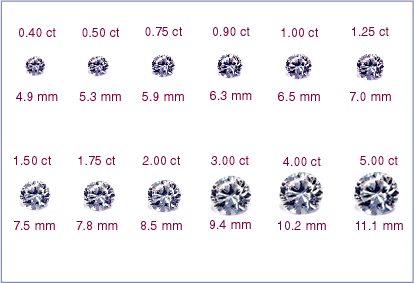
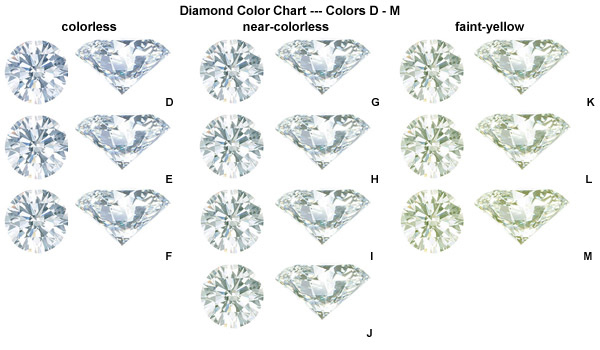
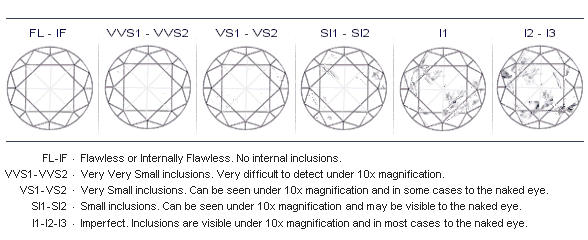
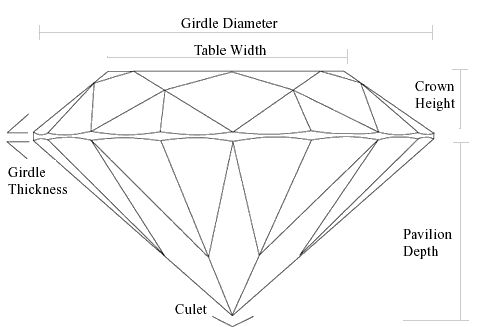
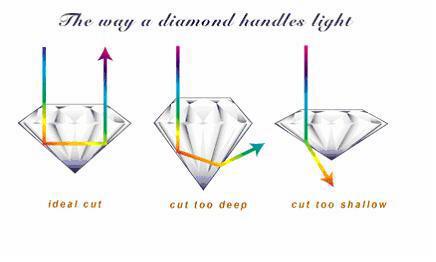

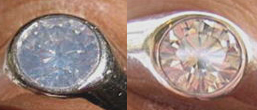
That is the right weblog for anybody who wants to find out about this topic. You understand so much its virtually laborious to argue with you (not that I actually would need…HaHa). You undoubtedly put a new spin on a topic thats been written about for years. Great stuff, simply great!
We are a group of volunteers and starting a brand new scheme in our community. Your website provided us with helpful info to work on. You have done an impressive task and our whole neighborhood can be thankful to you.